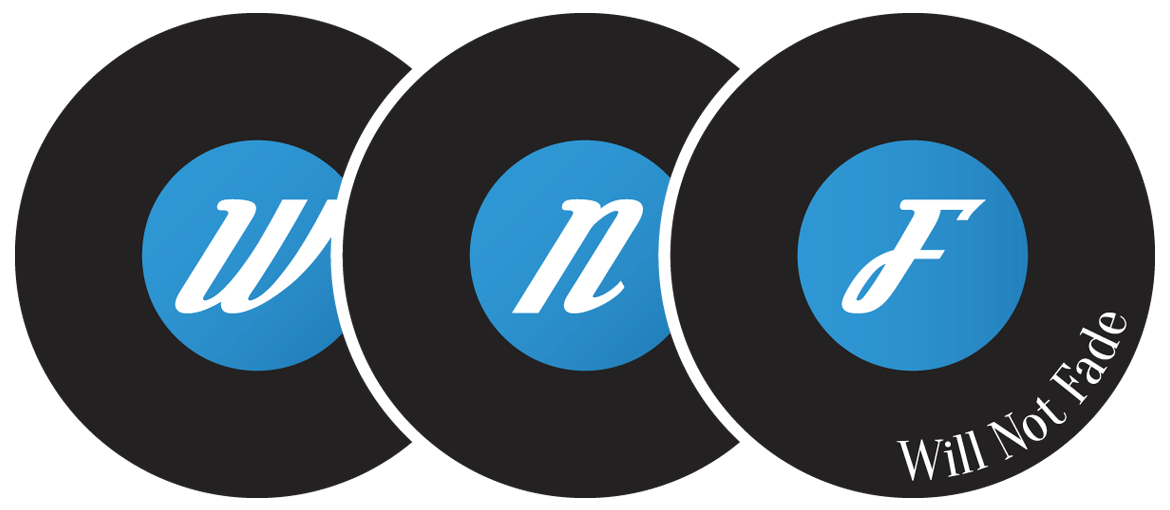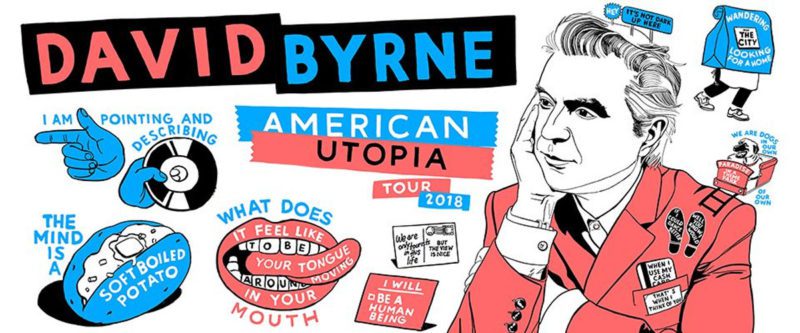David Byrne – American Utopia Tour
w/ Kimbra
TSB Arena, Wellington
Tuesday 13 November 2018
I’ve never seen TSB Arena set up with carpet tiles. I guess most of the time I’m watching rock bands and the bogans spill beer all over the floor, but still, it added a slight air of classiness to the night.
Kimbra seemed a suitable choice as opener tonight. Quirky, and very percussion-based, her unique brand of pop shares many commonalities with Byrne’s. Kimbra stood centre stage, fitted out in a glittery caped outfit that Rob Halford would be proud of. She was flanked by two other musos, mostly playing synth, but using a number of other instruments too. The mix sounded muddy, with excessive focus on the low-end, which sadly made Kimbra’s voice harder to hear. I didn’t enjoy it to start with, but towards the end of her set things started to improve.
On of the key figures in the CBGB’s scene – a New York club from whence the seeds of punk and new-wave grew – David Byrne came to prominence fronting Talking Heads, which in turn provided a springboard for his solo music career. Tonight drew heavily from his recent album American Utopia, with a few covers and Talking Heads numbers thrown in for good measure.
In a live setting there are bands that play music, and bands that put on a show. There was never any doubt that Byrne falls into the later category.
Byrne sat on a chair at a solitary desk situated centre stage. Stark lighting illuminated draped strings that hung around the perimeter of the stage, acting as curtains that could easily be passed through at any point. He held a fake brain up as a prop, pointing to different sections as he sung his song “Here”. Screens either side of the stage showed this from a bird’s-eye perspective, giving an oddly surreal feel.
He wore a crisp all-grey suit, with all three blazer buttons done up. But his bare feet and shock of thick white hair gave the impression of someone slightly eccentric. Although how small is the divide between eccentric and genius?
Some band members came on stage to join him, a couple backing singers, a keyboard player, guitar and bass. They all dressed uniform: barefoot in grey suits. This is when things started to get impressive. The music was captivating, but all the performers danced and moved around in sync. Hats off to the choreographer, and to the performers who had to memorize and execute the nearly two-hour long set most nights.
It was infectious too. The entire event was seated, with no general admission option, but you could see by the third song that a mass migration was well underway, with punters abandoning their allocated seats for dancing space within the aisles. It makes me wonder why they even bothered setting up chairs in the first place, knowing the kind of music Byrne would play.
There were 12 musicians in total. Some had distinct roles – like the singers and keyboardist, but many changed instruments depending on the song. And did I mention that they all moved about the stage? That’s right: no stationary drum sets, no keyboards on stands; everyone danced about the stage and played flawlessly while they were mobile. Byrne himself took to guitar on a few songs too.
I can’t even name all the instruments I saw. There were lots of drums and percussive instruments. The final song featured melodica solos. And it was all live. Byrne explained that although many people suspect backing tracks and samples, everything was coming from the 12 people onstage or in the wings. It was hard to believe, but he broke down one track, allowing us to see for ourselves as each musician began to join in sequentially.
The stage set-up changed slightly for each song. Usually it was all under stark white lighting, but they made use of spotlights and shadows to highlight certain elements. My favourite effect was a harsh floodlight at the front of the stage projecting shadows of the players against the rear wall. The musicians would march on and off stage at certain points, providing visual dynamics to match the wonderful music.
As you can guess, some of the songs that garnered the best reaction from the crowd were the bigger Talking Heads hits, such as “Once In A Lifetime”, “Road To Nowhere” and “Burning Down The House”. One of the best songs took me by surprise though.
I had expected them to close with “Psycho Killer”, on of the more iconic Talking Heads songs. Instead, they finished the night with an electrifying cover of called “Hell You Talmbout”. Byrne explained that he’d seen Janelle Monáe play it at the 2015 Women’s March, and had become completely taken with the song.
And I can see why. First of all, it made use of the many talented percussionists and drummers in the band, providing a compelling primal energy. Secondly, the political content provided a righteous anger to help everyone get fired up. And finally, it is repetitive, which helped everyone fall under the spell of the infectious groove. What an incredibly powerful song.
It was a sensational night. Fantastic music, impressive showmanship, great stage set up, brimming with fun energy, and completely original. Byrne demonstrated exactly why he’s managed to have such a long and critically acclaimed career. If you get the chance to see this show, do not miss it!
Joseph James


One thought on “Live Review: David Byrne at TSB Arena, Wellington”